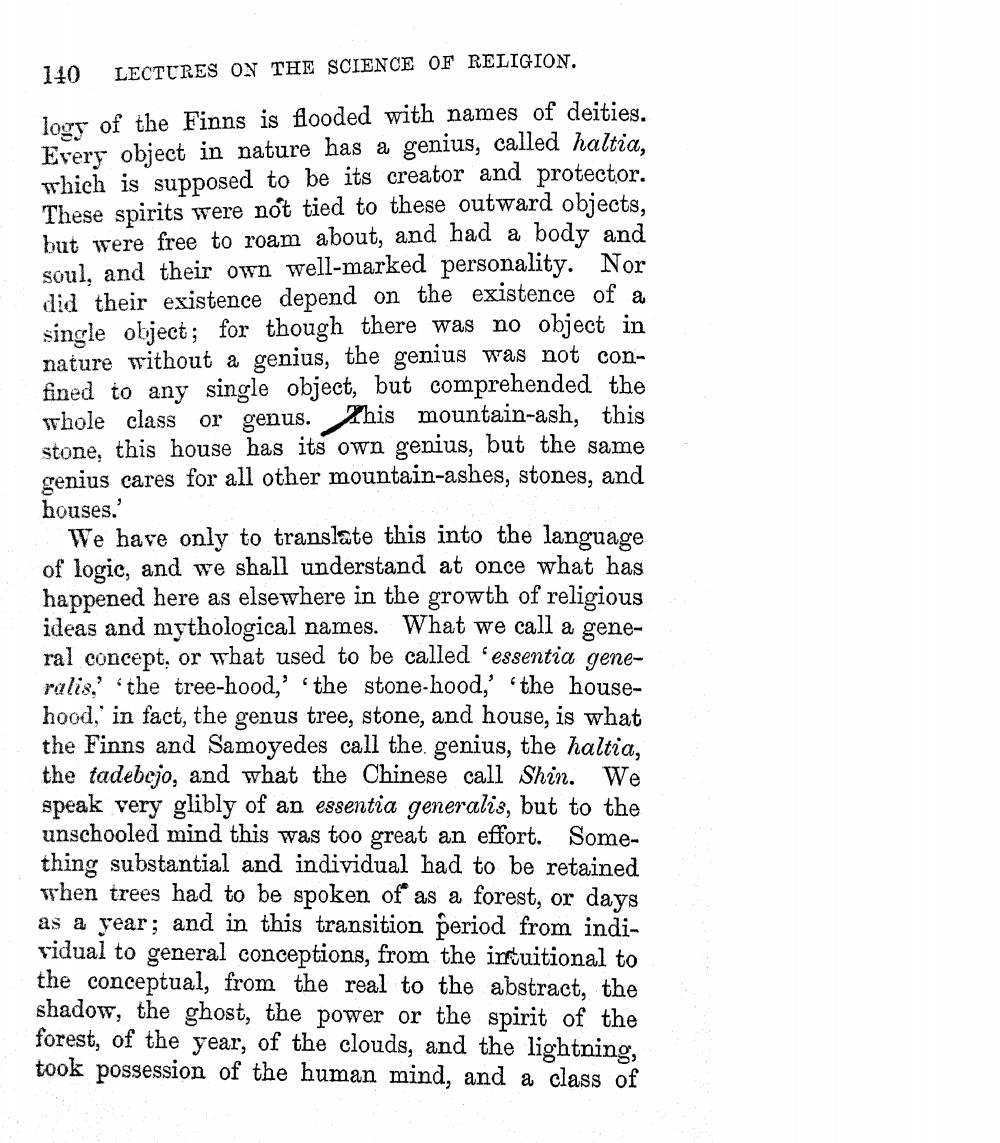________________
140
LECTURES ON THE SCIENCE OF RELIGION.
logy of the Finns is flooded with names of deities. Every object in nature has a genius, called haltia, which is supposed to be its creator and protector. These spirits were not tied to these outward objects, but were free to roam about, and had a body and soul, and their own well-marked personality. Nor did their existence depend on the existence of a single object; for though there was no object in nature without a genius, the genius was not confined to any single object, but comprehended the whole class or genus.This mountain-ash, this stone, this house has its own genius, but the same genius cares for all other mountain-ashes, stones, and houses.'
We have only to translate this into the language of logic, and we shall understand at once what has happened here as elsewhere in the growth of religious ideas and mythological names. What we call a general concept, or what used to be called 'essentia generalis, the tree-hood,' 'the stone-hood,' 'the househood, in fact, the genus tree, stone, and house, is what the Finns and Samoyedes call the genius, the haltia, the tadebejo, and what the Chinese call Shin. We speak very glibly of an essentia generalis, but to the unschooled mind this was too great an effort. Something substantial and individual had to be retained when trees had to be spoken of as a forest, or days as a year; and in this transition period from individual to general conceptions, from the intuitional to the conceptual, from the real to the abstract, the shadow, the ghost, the power or the spirit of the forest, of the year, of the clouds, and the lightning, took possession of the human mind, and a class of




